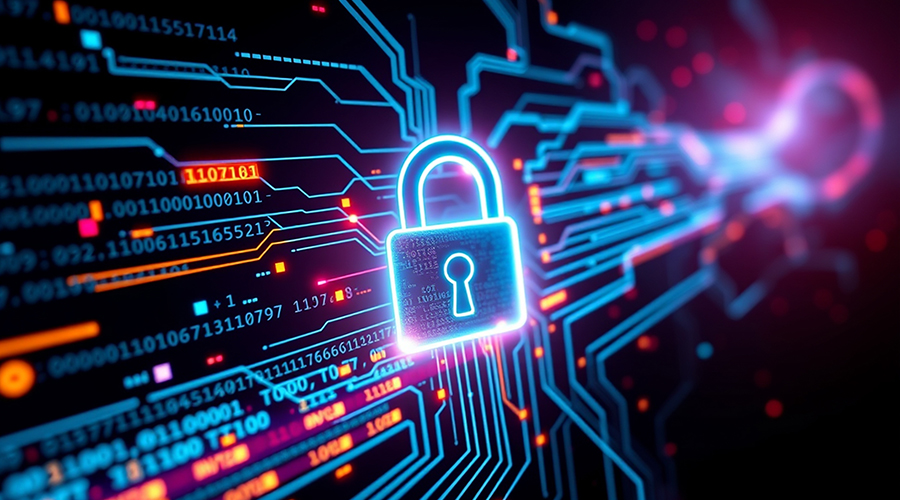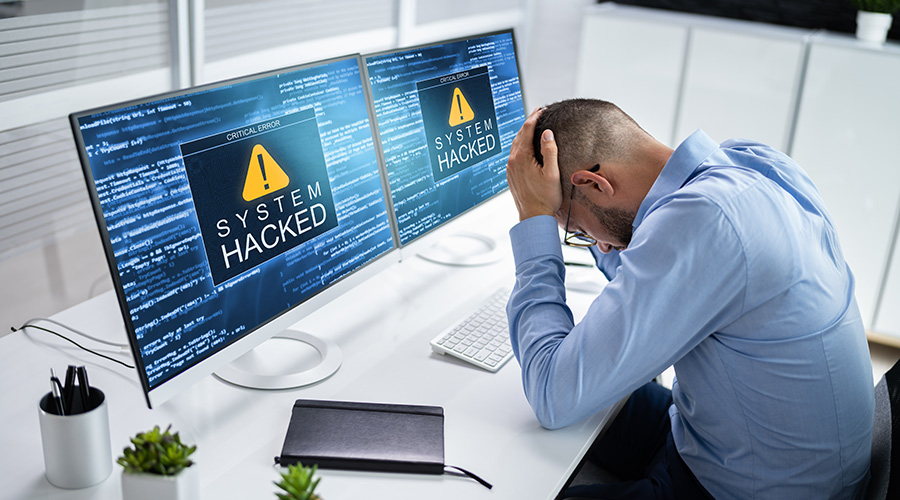New World of Security Technology
Falling equipment costs, more sophisticated technology and increasing use of the corporate network are changing the security landscape
The recently opened Embassy Suites Hotel in Montreal, Quebec, Canada is one small sign of things to come in the world of facility security. The hotel has a video surveillance camera system that monitors activity near guest floor exits, employee entrances and the main lobby, am ong other areas. That’s not unusual for hotels. What’s less common is that the cameras are linked to a dedicated computer server, and also are Internet Protocol (IP)-based. As a result, staff can monitor the hotel remotely.
At the Embassy Suites and other facilities, advances in security technology are offering both more effective protection and easier system management. The Embassy Suites installation is a good example of a significant shift that is occurring in both surveillance and access control systems. Systems and devices that are connected to corporate networks via the Intranet and Internet are replacing stand-alone devices and systems operated on a dedicated infrastructure, says Steven Van Till, president and chief operating officer with Brivo Systems. As a result, facility and security managers can obtain security information from any computer connected to the network.
This also streamlines facility management, making it possible to manage several building systems, such as security and HVAC, from a single computer, says Roger Roehr, manager of the government vertical market with Tyco International Software House. “You can consolidate management,” he says.
At this point, only about 10 percent of all video surveillance systems currently installed are networked. However, that number is growing at about 50 percent annually, says Fredrik Nilsson, general manager with Axis Communications. Within three to five years, about half the installed systems will be IP-based, he estimates.
In the past, linking security devices with the corporate network required the use of specialty cabling and custom developed software. Today, it can be done with Category 5 (often referred to as “Cat 5”) cabling. More system integrators work with Category 5 cabling than with specialty cabling, which helps to hold the line on installation costs. Often, Cat 5 cabling is already present in the areas where security equipment needs to be placed, further reducing costs. And Category 5 cabling is bi-directional, says Todd Dunning, senior product manager with Pelco. Not only can the camera send images to a computer, but the facility manager can transmit instructions to the camera.
Another significant change is the move from analog to digital security cameras. While some analog cameras still are installed, the number is steadily decreasing, Van Till says. One reason for the shift is the higher quality video images available with digital cameras, Nilsson says. Digital security cameras can capture images at between one and three megapixels, while analog cameras are limited to about .4 megapixels. Networked cameras also are easier to install because they can use the company’s existing network infrastructure.
Color cameras also are becoming more prevalent. Dunning estimates they currently account for about two-thirds of the market. The most significant drawback to color cameras, and the reason they haven’t taken over the security market altogether, is that they tend to be less sensitive in the dark, he says. Monochrome cameras are better at detecting activity in low light.
However, the ability of color cameras to capture images in low light is improving steadily, Dunning says. One solution that’s growing in popularity involves what are known as “day and night cameras.” Such cameras take color images during the day and then switch to black and white at night.
While lack of bandwidth has been an obstacle to the deployment of networked video cameras, that’s no longer the case, as the networks and switches have improved, Nilsson says. For example, five years ago, the typical network switch could handle 100 megabits per second. That’s now increased to 1,000 megabits per second. In fact, many facilities can access more bandwidth than they actually need, he says.
Also growing in popularity are “wide dynamic range” cameras. These pick up activity in both bright and dark environments. As a result, they can capture images indoors, where it’s generally lighter, as well as outside a window, says Dunning. That makes them particularly effective in lobby areas.
For video cameras to be most effective, someone has to watch the images recorded. But in practice, most security videos are not viewed. Instead, videos are simply written over after a certain amount of time has passed.
Expecting someone to watch a security video round-the-clock usually isn’t feasible, says Jerry Cordasco, vice president of integrated security solutions with G4S Technology. First, it’s expensive. What’s more, in many cases it takes just 20 or 30 minutes of watching video to cause security officers’ minds to wander. When that happens, they may miss any important events occurring on screen anyway.
This is where an emerging technology known as “video content analysis” or “intelligent video” comes into play. “This is like video motion detection on steroids,” Cordasco says. “It’s a combination of digital video technology and behavioral science.”
Intelligent Video
A video analytic solution consists of software that monitors events being recorded by the camera. The software issues an alert if it detects an event that is out of the ordinary. For instance, the software may be programmed to notify security or facility management if it senses glass breaking, records a person in a secured area after hours, or detects someone trying to cover the security camera.
The software uses complex algorithms that distinguish suspicious activity from the regular comings and goings of building occupants, Cordasco says. As an example, to determine whether an object located near a perimeter fence at night is a person about to break in, or an animal out for a midnight snack, the software would consider the ratio of the individual’s height to its width. If the software determines that the object is a human being, it can switch on the property’s floodlights. An image of the person can then be sent to the facility management team, says Roehr.
As video analytic software becomes more widely deployed, its cost will drop. Also, more of the algorithms eventually will be built into the cameras’ processors, Cordasco says. While some cameras today include very simple algorithms, complex algorithms require more processing power than most cameras can provide.
Access Control
Access control systems are also moving onto corporate networks, says Robert McKee, director of business development with Pelco. As with camera systems, networked access control solutions are easier to manage, and the information they contain is accessible via a network or the Internet.
One example is the access control system installed within the Village of Breckenridge in Colorado, a resort complex with about 240 units. Previously, the Village struggled to ensure all guests received an underground parking space. There were several challenges. First, there were not enough parking spots for each unit. To make matters worse, some guests who had completed their stay would give their passes to individuals who were staying elsewhere, but needed a place to park.
To solve this problem, Breckenridge management linked an online parking reservation system with the resort’s access control system. Now, guests receive a parking permit with an encoded microchip that only is good for a certain period of time. Once a guest’s stay is complete, the permit is de-activated. This ensures that all guests who reserve a place to park will get one, but only for the length of their stay. Security is enhanced because it’s no longer possible to hand off a parking permit to any individual. What’s more, the upgrade didn’t require hiring attendants to staff the parking garage round-the-clock.
The Rise of Biometrics
Another shift in access control is the growing acceptance of biometric technology. “The biometric product gives the ability to definitely recognize people coming into the facility or turning on a computer,” says Joe Turek, chief executive officer with Akcess BioMetrics Corp. That’s because it involves identifying people by a biometric feature, such as a fingerprint or iris, which can’t be duplicated or stolen. As a result, it provides a greater level of security than many other access control system credentials.
One trade-off with biometric technology is time. It can take longer for occupants to enter or exit a facility using biometrics, Turek notes. While employees need just a second to waive a magnetic-stripe card in front of a card reader and gain access, scanning an individual’s eye or fingerprint and comparing it with a database of thousands of individuals can take several seconds. The extra seconds will add up if the process occurs at the start of the workday and many people need to get to their offices.
Several tactics can speed the process. One is to shift from an identification process to a verification process, Turek says. With identification, the individual puts a finger into the reader; the software analyzes it and checks whether the individual is in the database and allowed to enter. With verification, the individual presents a card with biometric information already embedded, and the software checks to see if the individual is in the database. This eliminates the need to scan each individual every day.
Another technique is to partition the database so that, for example, employees are segregated by their shift. Then, the software can search a smaller subset of people to determine who can enter at a particular time.
The price of biometric equipment is declining by 10 to 30 percent annually, says Turek. While the systems still are about twice the cost of key card systems, they offer greater security, he says. In addition, biometric solutions alleviate the risk of having to re-key an entire facility due to lost keys or magnetic-stripe cards.
And while privacy concerns have dogged biometric technology in the past, they’ve largely abated, Turek says. The images collected by the system are converted to numbers that are meaningless except to the biometric device.
Smart, Very Smart
Another shift, McKee says, is the transition from magnetic-stripe proximity cards to smart cards that can store information, such as an individual’s biometric identification or account in the company cafeteria. Like biometric devices, smart card costs have been dropping. Currently, the cost of smart cards is almost even with proximity cards, McKee says.
Buildings requiring the highest levels of security, such as some government facilities, are moving to a three-step identification process, McKee says. To gain access, individuals are evaluated on “something they are,” a physical attribute like a fingerprint; “something they have,” such as a smart card; and “something they know,” such as a password.
While new security technology offers significant benefits, implementing these systems can present challenges. Most require a degree of technical expertise that many facility executives previously haven’t had to obtain. “They have to be more network-savvy,” McKee says.
In addition, many implementations require cooperation between security and IT. Clearly for this to be effective, both groups need to work together and share the same terminology. For facility executives, effectively managing the people that operate the technology continues to be critical.
Teamwork and management optimize technology advances. The result: better and easier facility security.
About the Security Industry Association
The Security Industry Association (SIA) is a nonprofit international trade association representing electronic and physical security product manufacturers, integrators, specifiers, and service providers. SIA promotes growth and professionalism within the security industry by providing education, research, technical standards and representation and defense of its members’ interests. SIA is the sole sponsor of the International Security Conference and Exhibitions (ISC EXPOs), the world’s largest electronic and physical security conferences and trade shows.
SIA’s members include professionals from every phase of the business from manufacture to installation, and their clients run the gamut of the economic sector: commercial, institutional, residential and government.
|
Related Topics:











